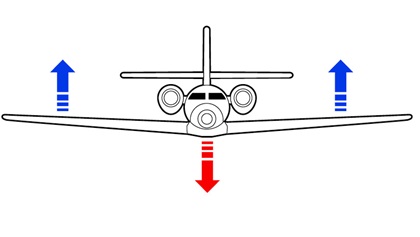Lear’s label
What’s up with zero fuel weight?
By J. Mac McClellan
Bill Lear largely ignored the aviation establishment to create the original Lear Jet. When it came to weight limitations, he did a better job of describing at least one limit.

 What the industry labels the “maximum zero fuel weight” limitation Lear called the “wing bending” weight limit. Lear’s label for the limitation described the reason for its existence perfectly.
What the industry labels the “maximum zero fuel weight” limitation Lear called the “wing bending” weight limit. Lear’s label for the limitation described the reason for its existence perfectly.
During our initial training and experience in light airplanes we don’t encounter the zero fuel weight (ZFW) limit often, if ever, even though it’s a critical limitation in all larger airplanes. That’s why Lear’s name for the limitation is important, and easy to understand. Weight in the fuselage increases the bending load on the wing. And that’s why a ZFW limitation is needed.
Engineers explain the issue as “moment.” Non-engineers may find it easier to understand the limitation if we think of the term “leverage.” Either way, the more weight is centered at the wing root the more the wing bends, and the greater the load on the wing structure.
Imagine lifting an object using only the tips of your extended fingers. Not easy. Now spread the weight across the extended fingers and you can lift a much greater load. That’s how the ZFW protects the wing structure from overload.
Fuel in the wings is spread across the wingspan and thus doesn’t impose huge bending loads at the wing root. Turbulence or maneuvering loads on the wing lift the fuel weight across the span instead of levering the load to the wing root.
As airplanes grow larger their ratio of empty weight to maximum takeoff weight increases. Many large airplanes have empty weights less than half of the maximum takeoff weight, but if all of that “usable” weight was put in the fuselage the bending loads on the wing root would be unsustainable. The ZFW limitation prevents that.
It is ZFW that determines the maximum payload in turbine airplanes. The payload is people and stuff carried in the fuselage, both in the cabin and baggage compartments. The maximum payload is ZFW subtracted from maximum ramp weight. All weight greater than the ZFW must be fuel.
One reason Lear called its limitation wing bending instead of ZFW—other than, well, just being Bill Lear—is because Lear Jets have fuselage fuel tanks. Fuel in the fuselage is just like any other fuselage weight, and it must be lumped into the same category as passengers and baggage.
Fuselage fuel tanks are all but gone from any recent design because aerodynamicists have figured out how to make low drag, very fast, and high-flying wings thicker. That thicker airfoil provides plenty of space to carry all the fuel required and resolves the plumbing and CG complexities of fuselage fuel.
At first ZFW makes little sense. But if you just think about that wing bending with every bump, it’s a limit you can understand, and certainly want to honor.
J. Mac McClellan is a corporate pilot with more than 12,000 hours, and a retired aviation magazine editor living in Grand Haven, Michigan.


